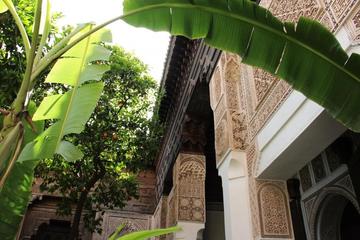Forget fancy dining! These streets of Marrakech will give you a real taste of bubbles, and sizzles in the city. You will feel how its traditional touch perfumes the air right on its vibrant streets.
Think about wandering through the maze-like alleys, and you are drawn in by the smoky scent of grilling meats. This isn’t just about food but an experience into the heart of Moroccan culture.
The street food experience in Morroco give you a chance to connect with locals. You can enjoy its traditional taste and flavors that have been passed down through generations. From savory tagines cooked in ancient clay pots to sweet, honey-drenched pastries, the sheer variety of street food Marrakech is a delicious adventure waiting to happen.
Ditch the tourist menus and follow your nose – you’re in for a treat! This guide will lead you through the top 10 Marrakech street food experiences you simply can’t miss.
Top 10 Street Food Experiences in Marrakech: A Delicious Guide
These are 10 different street food experiences in Marrakech that will certainly remain in your mind when it comes to taste. Let’s explore top 10 Marrakech street foods:
1. Tangia
The authentic Marrakechi dish is prepared in a typical clay pot, buried in the hot ashes in a public oven, and slow-cooked for hours. It is a dish of very tender and tasty meat-lamb or beef –with its dominating spices, i.e., cumin, saffron, and preserved lemon. Sharing with friends or family a tangia pot is an extremely warm experience. Seek the vendor by the souks or in the Mellah (Jewish Quarter).
2. Snail Soup (Escargots)
For the bold eater, snail soup has to be tasted. Simmer tiny snails in a broth delicately flavored with herbs and spices, it is then poured piping hot into small bowls. Most locals will tell you that the broth has healing powers. Snail sellers and their steaming pots will be found around Djemaa el-Fna and other bustling places. Just taste because it sounds adventurous; it is very earthy and savory.
3. Msemen (Moroccan Pancakes)
These are flaky square pancakes and one of the most famous breakfast or snack items, simply prepared with layers of thin dough cooked on an extremely hot griddle. It tastes best, plain with honey and butter, or all stuffed with savory filling – onions and spices. Msemen vendors are found everywhere, often preparing it in front of you.
4. Harira Soup
This classic soup is rich and tantalizing in taste. Natives love to have it during Ramadan. It is made from tomatoes, lentils, chickpeas, and lamb or beef. Then it is flavored with spices such as cinnamon, ginger, and saffron. You will see a serving of dates and chebakia (honey-sesame pastries)alongside harira. You can easily find its stall on the streets in the evenings. The perfect spot to locate is near Djemaa el-Fna.
5. Grilled Meats (Mechoui and Kefta)
The aroma of meat grilling fills the air everywhere in Marrakech. Mechoui is roasted whole lamb; it is going to melt in your mouth with incredible flavor. Kefta are minced meat skewers seasoned and grilled. You would see vendors with various meats grilling, usually served with bread and a simple salad. Djemaa el-Fna at night is the ecosystem for grilled meat lovers.
6. Tagine
It is true that you are experiencing a fine dining experience when you have it in a restaurant. Street corner vendors offer a different but very charming experience. The name of Tagine comes from the conical clay pot. These slow-cooked stews are prepared in special pots. Tagine is made in different flavors and usually consists of meat and vegetables. It is particularly flavored with dried fruits like apricots and prunes. Look out for vending stalls with tagines simmering over charcoal for that authentic taste.
7. Fresh Juices
Now all you need is a cold glass of fresh orange juice, a common sight here in Marrakech. There are hundreds of juice stalls here that sell just about any fruit juice, from pomegranate to grapefruit, or mixed with other fruits. These are refreshing and cheap and healthy watering holes. Just about the most well-known of these juice vendors is Djemaa el-Fna.
8. Chebbakia
Chebbakia take the form of intricate flower shapes once it is deep-fried, and honey-coated. It is served with sesame seeds sprinkled after frying. The taste of Chebbakia is overly sweet for some. But it is a popular delicacy during the month of Ramadan. Also, it is celebrated as an occasional luxury. You will find them across sweet stalls distributed all over the city, most especially in the souks.
9. Mint Tea
Not considered food by any means, but no street food experience in Marrakech deems itself complete without a shot of traditional Moroccan mint tea. This drink is sweet and refreshing, poured from a height, and symbolizes hospitality everywhere it is offered. It is a perfect match for the street food experience.
10. Tanjia Marrakshia (Different than Tangia)
This precisely refers to the way tangia is cooked in Marrakech, indicating its slow cooking in the ashes of a public oven. This also means that the nuances of flavor from this style magically make it an authentic and indispensable delicacy of the street food culture of the city.
Key Takeaway
Really, the street food scene is more than stuffing your stomach; it is really a cultural experience. From the melting tenderness of Tangia to sweet mint tea amid the hectic crowd, every morsel embodies traditions and tastes with the lively spirit of this alluring city. The other cafes are cute, but go cross aside. This is where the tasty ordeal begins; just embrace the chaos, and your palette will adore you for doing that.
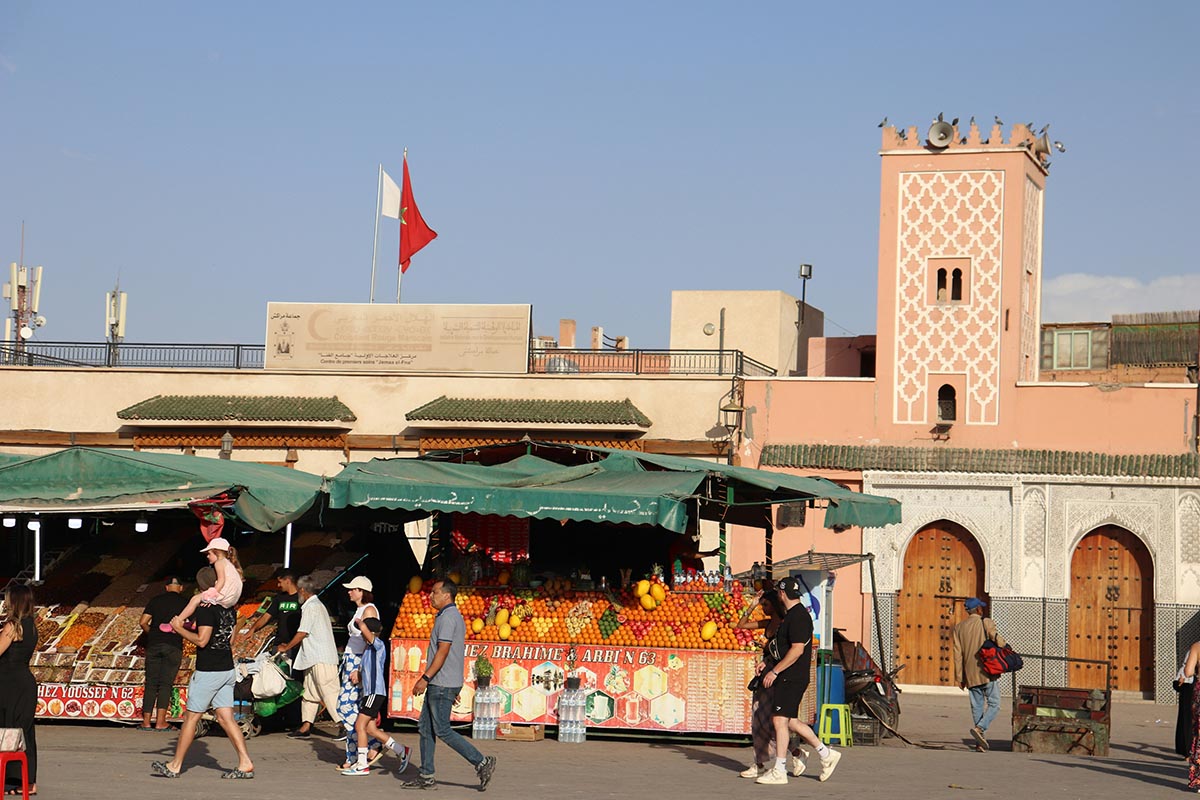
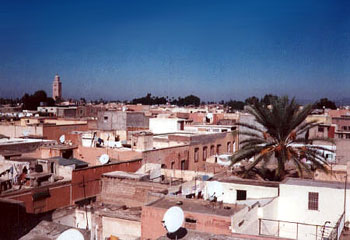
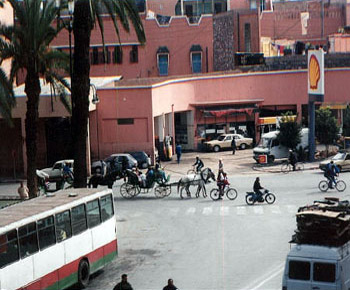 Marrakech is a spectacle of exotica. On a recent eight-day tour, I stayed at the enchanting old Hotel du Foucald, which is well situated for sightseeing in Marrakesch’s medina (old town). The hotel is just across from the famous Djamaa el Fna square with its labyrinth of side streets, hammams, caravanserai and bazaars. The souq is a maze of tiny covered walkways where everything is sold from embroidered saddles for camels, to potions for casting spells. On the bustling streets, donkeys are everywhere, some loaded with produce, others with pottery, some pulling carts heaped with mint for tea. The donkeys wear shoes made from car tires to keep them from sipping on the cobblestones. Weavers and coppersmiths work their trades. Herb doctors assure us their products are better than Viagra. You can buy almost any unusual medicine: goat hooves for hair treatment, ground up ferret for depression , and dried fox heads to use for magic potions.
Marrakech is a spectacle of exotica. On a recent eight-day tour, I stayed at the enchanting old Hotel du Foucald, which is well situated for sightseeing in Marrakesch’s medina (old town). The hotel is just across from the famous Djamaa el Fna square with its labyrinth of side streets, hammams, caravanserai and bazaars. The souq is a maze of tiny covered walkways where everything is sold from embroidered saddles for camels, to potions for casting spells. On the bustling streets, donkeys are everywhere, some loaded with produce, others with pottery, some pulling carts heaped with mint for tea. The donkeys wear shoes made from car tires to keep them from sipping on the cobblestones. Weavers and coppersmiths work their trades. Herb doctors assure us their products are better than Viagra. You can buy almost any unusual medicine: goat hooves for hair treatment, ground up ferret for depression , and dried fox heads to use for magic potions.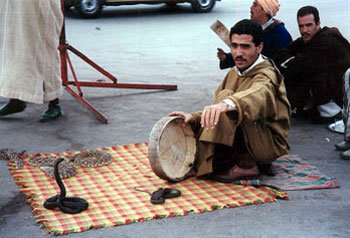 The busy Djmaa el Fna is a magic world of snake charmers, musicians, acrobats, water vendors wearing distinctive red suits and wide-brimmed hats and jangling bells, story tellers, ebony-skinned dancers in brightly hued costumes, boys with pet monkeys, and other assorted side-show attractions will entertain you — for a price. Don’t try to take photos of these colourful entrepreneurs without expecting to pay, and make sure you only pay no more than five dirham. Once you know your way around and have a feel for the place, it’s fun, and during the day not dangerous to wander on your own.
The busy Djmaa el Fna is a magic world of snake charmers, musicians, acrobats, water vendors wearing distinctive red suits and wide-brimmed hats and jangling bells, story tellers, ebony-skinned dancers in brightly hued costumes, boys with pet monkeys, and other assorted side-show attractions will entertain you — for a price. Don’t try to take photos of these colourful entrepreneurs without expecting to pay, and make sure you only pay no more than five dirham. Once you know your way around and have a feel for the place, it’s fun, and during the day not dangerous to wander on your own.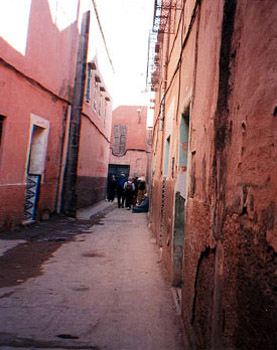 After a morning of touring the historic sites, I took a calèche (horse-drawn carriage) to the Jardin Majorelle in the European quarter. This beautiful garden estate was created in the 1920s by the French Orientalist painter Jacques Majorelle and is now owned by fashion designer Yves St. Laurent. It’s a tropical paradise of tall cacti and palms set against pink towered buildings and grill-worked gateways. Bougainvillea, hibiscus and flowering potted plants line the cobbled pathways. The colours of the buildings and clay pots are dazzling brilliant blue, turquoise, pink, yellow, and orange, all complimenting the colours of the flowers. Birds twitter in the trees and trellises hang with flowering vines. Many different tropical plants grow in abundance. The artist’s studio has been converted into a small Museum of Islamic art and displays St. Laurent’s fine collection of North African carpets and furniture as well as Majorelle’s paintings.
After a morning of touring the historic sites, I took a calèche (horse-drawn carriage) to the Jardin Majorelle in the European quarter. This beautiful garden estate was created in the 1920s by the French Orientalist painter Jacques Majorelle and is now owned by fashion designer Yves St. Laurent. It’s a tropical paradise of tall cacti and palms set against pink towered buildings and grill-worked gateways. Bougainvillea, hibiscus and flowering potted plants line the cobbled pathways. The colours of the buildings and clay pots are dazzling brilliant blue, turquoise, pink, yellow, and orange, all complimenting the colours of the flowers. Birds twitter in the trees and trellises hang with flowering vines. Many different tropical plants grow in abundance. The artist’s studio has been converted into a small Museum of Islamic art and displays St. Laurent’s fine collection of North African carpets and furniture as well as Majorelle’s paintings.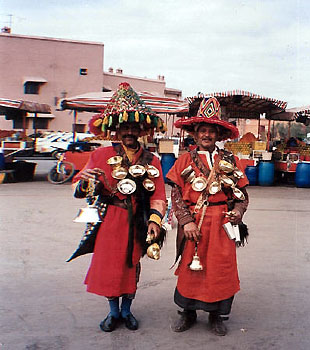 Later I got a sense of what it would be like to live in a Moroccan home when I visited the Maison Tiskiwin, a 19th century house once the home of a Dutch anthropologist. It now houses a stunning collection of jewellery, clothes, fabrics and carpets. Houses in Marrakech are windowless, with rooms opening to a sun-lit inner courtyard; the walls hung with woven tapestries and floors paved with lapis and turquoise tiles.
Later I got a sense of what it would be like to live in a Moroccan home when I visited the Maison Tiskiwin, a 19th century house once the home of a Dutch anthropologist. It now houses a stunning collection of jewellery, clothes, fabrics and carpets. Houses in Marrakech are windowless, with rooms opening to a sun-lit inner courtyard; the walls hung with woven tapestries and floors paved with lapis and turquoise tiles.